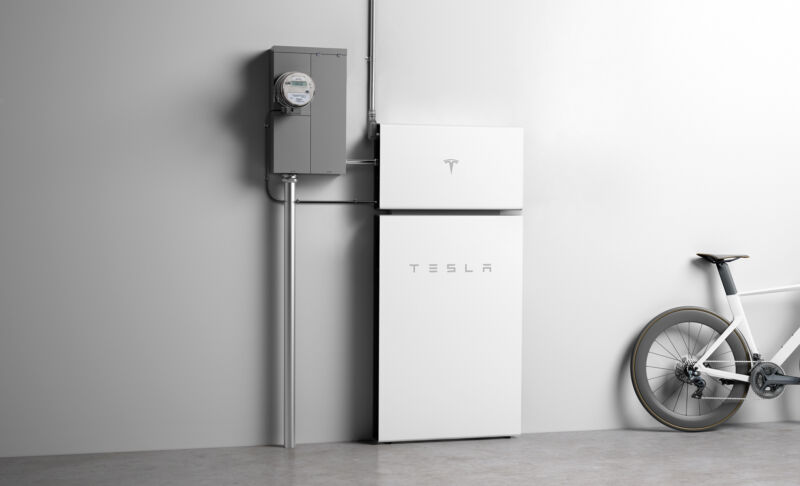
Last week, Tesla announced a program for California-based owners of its home battery products. Sign up with the company, and you'd become part of what the company calls a "virtual power plant." You would be able to use your battery to keep the grid stable during periods of high demand and be well-compensated for the electrons.
While this may conjure images of Powerwall batteries across the state sending electricity to the grid during a crisis, that doesn't appear to be what's happening here. Instead, the batteries will be taking part in a utility's program that's designed to reduce demand, which the utility company will presumably do by using the battery to supply some of the demand inside the battery owner's house. It's a clever way for homeowners to take advantage of a program that's otherwise limited to commercial users.
It’s an emergency
Tesla's announcement of the program says that it will be part of Pacific Gas and Electric Company's (PG&E, a California utility) Emergency Load Reduction Program, which we'll focus on in the next section. At the moment, we'll look at what participants will end up doing.
Based on Tesla's description, Powerwall owners can sign up for the program using the battery management software. Once taking part, users can set a minimum battery reserve: The software won't allow the battery to fall below that value, even if grid stabilization would benefit from additional power. Of course, if the grid fails, that reserve could end up being tapped into regardless.
It wouldn't be due only to participation in this program. The plan is open to any PG&E customers who aren't already participating in a similar program.
The program guarantees a minimum of 20 hours of events. If the grid doesn't face any power demand crises, then these will be scheduled with advanced warning. Demand spikes, which often accompany California heat waves, could see the 20 minimum hours exceeded and provide far less warning. Participants can opt out of a given event, suspend participation, or drop out at any time.
What do participants get beyond the satisfaction of helping keep the state's electric grid stable? A very good price for their electrons. Charging the battery from PG&E's grid will generally cost under $0.50 per kilowatt-hour. For each kilowatt-hour a person's battery takes off the system demands during these events, participants will be paid $2. That's a pretty substantial difference.
Demanding
How can that price difference make any sense from the utility's perspective? Home users don't directly pay the price that the utility pays for electricity at the moment it's needed. Instead, they pay somewhat above the average price the utility expects, allowing for a degree of profit. When PG&E is experiencing the need for emergency load reduction, it's because it's straining to line up sufficient supplies to meet demand. At those times, it's forced to pay for the most expensive generating sources to come online, and these may cost more than the $2 per kWh that it's willing to pay battery owners.
(As Tesla notes in its announcement of the program, these high-cost generators also tend to be the least efficient and most polluting, so avoiding their activation has additional benefits.)
One alternative to activating these low-efficiency, high-cost generators is reducing demand for power, which brings us to PG&E's Emergency Load Reduction Program. There are many options for reducing demand: raising thermostats from 70° F to 74° F, shutting off some equipment until demand drops, and so on. PG&E's program is intended for commercial organizations that can aggregate enough of these changes to reduce demand by a kilowatt during periods of high demand.
What Tesla appears to be doing is aggregating the services of a large number of battery owners that, individually, wouldn't come close to being able to drop demand by that much. And, given the involvement of batteries, it's presumably reducing demand by using the battery to supply some of the homes' energy needs. Put differently, it's pooling a whole bunch of individual homes and getting them to act as a single large facility that has reduced its demand.
The striking thing here is that Tesla's apparently passing on all of the money it will receive from PG&E directly to its battery users without taking a fee itself. There's a chance that the company negotiated a variant of the Emergency Load Reduction Program agreement with PG&E, and we've reached out to Tesla to find out. But the fact that the details line up so well suggests that any differences are minimal.
reader comments
312